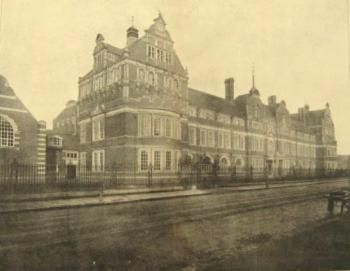Battersea Polytechnic School of Art
Battersea Polytechnic Institute was founded in 1891 under the City of London Parochial Charities Act of 1883, which was a scheme to establish Polytechnic Institutes throughout the capital. Situated in Battersea Park Road, the Institute was aimed at the people of Battersea, Clapham and Wandsworth and was the second of three proposed Polytechnics for South London. It was formally opened in 1894 by the then Prince of Wales (later King Edward VII and admitted more than 2,400 students on its first intake. The intake comprised in the main, both sexes aged between 16 and 25 years of age. There were six main departments comprising Mechanical Engineering and Building Trades, Electrical Engineering and Physics, Chemistry, Women's Subjects, and Art and Music.
The Art Department included courses in wood carving, stone carving, painting, jewellery, embroidery and lace making, but most were mainly on a part-time basis. The title of Polytechnic Institute was dropped in 1898 and during the years 1927 to 1939, the Polytechnic consolidated with a growing emphasis on science and engineering but the period saw the closure of the Art Department. In 1966, it received its charter as a University and the decision to move from London was made. Building began on the site adjacent to Guildford Cathedral, and the University of Surrey started the move to its new premises in 1968. The Battersea site was completely vacated by 1970 and is now part of Surrey University. Staff and alumni have included Emmanuel Levy, Henry Cogle, John Greenwood and Victor Hume Moody.
Get Unlimited Access from just £5


